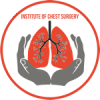The discovery of lung nodules can be a cause for concern, and many individuals may wonder about the appropriate course of action. Lung nodules are small, round or oval-shaped growths on the lungs that are often incidentally detected during medical imaging tests. While most lung nodules are benign, some can be malignant, indicating potential lung cancer. Monitoring these nodules and determining when to seek treatment is crucial for ensuring timely intervention and optimal patient outcomes. In this blog post, we will explore how lung nodules are monitored and when you should consider seeking treatment.
Understanding Lung Nodules and Their Implications
1. What are Lung Nodules?
Lung nodules are small masses, typically measuring less than three centimeters, that appear as solitary spots on the lungs. They are often found on chest X-rays or computed tomography (CT) scans, which are performed for various reasons unrelated to lung nodules.
2. Benign vs. Malignant Nodules
It’s essential to differentiate between benign and malignant lung nodules. Benign nodules are non-cancerous and usually pose no serious health risks. Malignant nodules, on the other hand, are indicative of lung cancer and require immediate attention and treatment.
How are Lung Nodules Monitored?
1. Initial Detection
Lung nodules are often discovered incidentally during routine medical tests, such as chest X-rays, CT scans, or other imaging studies. The size, shape, and location of the nodule are assessed during the initial detection process.
2. Follow-up Imaging
Once a lung nodule is identified, your healthcare provider may recommend follow-up imaging tests, such as CT scans, to track any changes in the nodule’s size over time. Repeat imaging allows the medical team to monitor the nodule’s growth pattern and determine if it is stable, growing, or shrinking.
3. Nodule Characteristics
Besides size, other characteristics of the lung nodule are evaluated, including its density, shape, and whether there are any spiculations (irregular edges). These features help in differentiating between benign and malignant nodules.
4. Calcification Patterns
The presence and pattern of calcification in a nodule can provide valuable information. Certain calcification patterns are more suggestive of benign nodules, while others may indicate malignancy.
5. Nodule Growth Rate
The rate of nodule growth is closely monitored during follow-up imaging. Rapidly growing nodules are of particular concern and may require further investigation and intervention.
When Should I Seek Treatment for Lung Nodules?
1. Size and Growth
The size of the nodule and any changes in its size over time are critical factors in determining the need for treatment. Generally, nodules less than 6-8 millimeters in size are considered low risk and may only require monitoring. However, if a nodule is growing rapidly or reaches a certain size threshold, further evaluation is necessary.
2. Risk Factors and Medical History
Your medical history and risk factors play a significant role in deciding the course of action. If you have a history of smoking, exposure to environmental toxins, or a family history of lung cancer, your healthcare provider may recommend more aggressive monitoring or immediate intervention.
3. Nodule Characteristics
The characteristics of the nodule, such as its shape, density, and presence of spiculations, are crucial in determining the likelihood of malignancy. Irregularly shaped or spiculated nodules are more concerning and may warrant further investigation.
4. Symptoms and Health Status
The presence of symptoms, such as persistent coughing, shortness of breath, chest pain, or unexplained weight loss, may indicate a more significant concern and necessitate prompt evaluation and treatment.
5. PET-CT Scan or Biopsy
If the initial imaging raises suspicion, your healthcare provider may recommend additional tests, such as a PET-CT scan or a biopsy, to further assess the nodule’s characteristics and rule out or confirm malignancy.
Conclusion
Lung nodules require careful monitoring to ensure early detection and timely treatment, if necessary. The evaluation of nodule characteristics, growth patterns, and your medical history plays a vital role in determining the appropriate course of action. Regular follow-up imaging and open communication with your healthcare provider are essential in managing lung nodules effectively.
If you have been diagnosed with lung nodules or have concerns about a recent imaging finding, it is crucial to collaborate closely with your healthcare team. They will provide personalized guidance based on your specific case, risk factors, and overall health status. Early detection and appropriate management of lung nodules can significantly improve outcomes and provide peace of mind for patients and their families.






